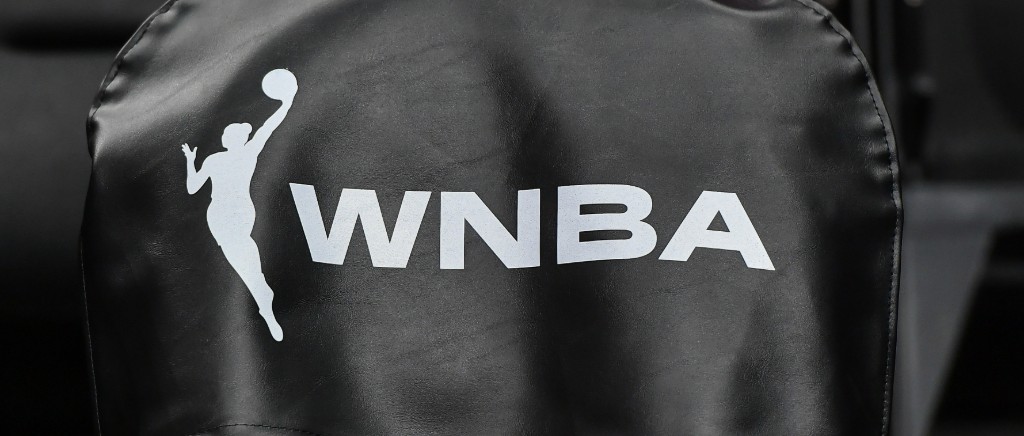
The WNBA is in the midst of a generational shift, one that sees new ownership groups coming in from elsewhere in the world of sports that see the league as a chance for investment in the future, not worrying about the balance sheets of today. The result is a power struggle at the highest levels of the league that has begun to play out publicly.
Earlier this offseason, Las Vegas Aces owner Mark Davis explained why he made Becky Hammon the first coach to make $1 million per year, saying that coaches salaries aren’t part of the CBA and he wants to make clear his investment in the team (and wishes he could pay players more). He did this in response to Liz Cambage, a former Aces star now in Los Angeles, calling out the discrepancy in Hammon’s salary and the max salary for WNBA players — as well as the travel conditions they face flying coach from game to game.
Davis also addressed that, saying he thinks the WNBA should allow teams to charter flights, something they currently aren’t allowed to because some teams can’t afford it and have it written into the CBA that it can’t be done to avoid a competitive imbalance. On Tuesday, we learned the battle over chartered flights is not something new to this offseason and that Davis’ statements follow a year-long fight behind closed doors about the issue.
Howard Megdal wrote a terrific, detailed report for Sports Illustrated about the situation, where Liberty owner Joe Tsai flaunted the league’s rules and secretly chartered flights for his players throughout the second half of last season, earning a $500,000 fine for doing so — one many owners thought wasn’t enough. Per Megdal, there is a division between the new big money owners and the longtime owners in the league, one that led to some contentious arguments during the early days of the offseason about chartered flights, with Tsai finding a way to get chartered flights sponsored by an airline for three years, but the Board of Governors shutting down the plan.
On Sept. 13, according to a source familiar with the call, the WNBA Board of Governors considered an unofficial proposal from the Liberty to make charter flights the default travel option for WNBA teams—the Liberty said they’d found a way to get it comped for everyone in the league for three years—but it lacked majority support. Some owners worried that players would get used to it, so there’d be no going back, and others wondered whether players might just prefer a salary hike instead.
Tsai eventually took his frustrations with the league’s refusal to engage in talks about chartered flights public, noting his plan to get airlines on board on Twitter in October.
League says you can’t fly charter because different owners have different financial circumstances. I’m working with Commissioner Englebert to find a charter sponsor. Conversations with airline CEOs going well. They get the idea of equity for women athletes.
— Joe Tsai (@joetsai1999) October 2, 2021
The line that is drawing the most attention, rightfully so, from the piece is that “some owners worried that players would get used to it,” which seems to be the point that Tsai and Davis are trying to make with their comments — these players deserve to be used to that kind of treatment. This is a fight that only seems to be escalating within the BOG, and it will be fascinating to see what comes next because, at some point, the change is coming and owners unwilling or without the ability to spend are likely going to get muscled out.
While the charter flight issue is written into the WNBA’s CBA, there are other ways for new owners to shift the balance of power and push other teams to up their treatment of players in the process. We’ve already seen how the Aces and Liberty have upgraded facilities to be in line with their NBA counterparts. In a league where money is mostly the same from team to team, it’s things like that — facilities, support staff, etc. — that can swing free agency decisions, and it forces other teams to follow suit or get left behind. That’s the case across all sports, with the NBA seeing an arms race of sorts in recent years with new state of the art practice facilities, and it’s a signifier that the WNBA is on the right path in terms of increased investment in the players.
With all the talk of expansion for the WNBA and the need to add teams given the amount of talent coming into the league and just 12 teams to take all of those players in, one would expect new ownership groups to be more in line with the Davis’ and Tsai’s. A few more owners with deep pockets who see the league as a long-term investment vehicle in a growing industry rather than a business in need of turning a profit or coming as close as they can in the immediate might just flip the majority on the Board of Governors. When that happens, the influx of cash into the league figures to come quickly and concerns over travel conditions for players will become a thing of the past.
